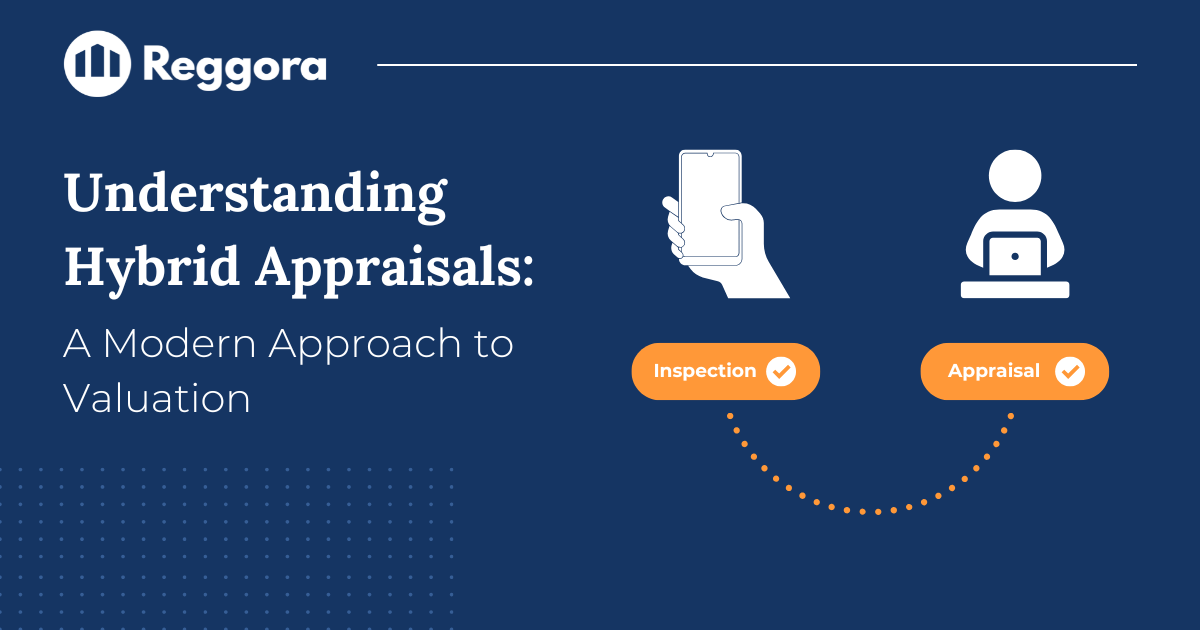Credible Appraisal Management ROI Starts with a Sound Assessment of Business Challenges

Mortgage lenders have long struggled to determine an accurate Return on Investment (ROI) when investing in new technology. This has, in turn, led to an unacceptable degree of uncertainty throughout the decision-making process, starting with the obvious: “Will my tech investment directly address my business challenges and generate a return?”
When attempting to determine a genuine ROI, it’s important that the standards and metrics used be closely aligned with the business need the new solution is brought in to solve. Consistency, as well, is critical.
While the traditional formula for ROI is fairly simple, determining the baseline, metrics, and overall goals can be anything but — especially when it comes to appraisal management software.
In our recently released white paper, instead of guessing what formulaic benefits a lender could achieve from updating the software and workflows in their appraisal department and then trying to arrive at an expected ROI, we examined actual problems that prompted lenders to seek innovation. Using multiple case studies and authenticated GSE industry research, we determined that Reggora appraisal management technology reduces the average cost per loan by up to $258.
Among the multiple problems we identified and studied in the traditional appraisal process were:
- The amount of time it actually takes to get an appraisal done
- The time it takes to review a completed appraisal report
- Revenue leakage as the result of uncollected appraisal fees
Here's a deeper look into those problem areas.
Problem: It takes too long to get an appraisal done
Any lender who has ever ordered an appraisal report knows that this process far too often takes too long. In 2022, STRATMOR Group, in conjunction with Reggora, surveyed a wide range of mortgage lenders regarding their views/experiences with valuation and appraisal and found that the biggest time-waster is order placement.
The study showed on average it took one week to find an appraiser and from the time a lender realized they needed an appraisal to final delivery was about 19 days. In many cases, that stems from the lack of sophisticated or appropriate automation and the reliance on manual processes.

However, the lenders we researched implemented new and appropriate technology to automatically allocate orders to the right vendors. As a result, they were able to reduce the number of staff required, speed up the process, and ultimately save money.
In our white paper, we spelled out how Reggora’s order management solution specifically reduced a lender’s cycle time from that produced by prior methods. We also walked through one of our case studies with a leading regional bank, which sought to reduce cycle times without adding FTEs, and was able to do so using the Reggora platform.
In fact, the bank reduced the time it takes to manage an appraisal order and appraisal billing by 20%, saving $100,000 in FTE overhead.
And that’s not the only example. Both North Easton Savings Bank and Assurance Financial shaved off time on each order by automating most of the low-value tasks they used to complete manually. We have the metrics to prove it, outlined in the white paper.
Problem: It takes too long to review an appraisal
Regulators require the lender to review each appraisal report before using it to underwrite a new mortgage loan, but this takes time.
In our research with STRATMOR, we learned that it’s taking lenders far too long. However, the use of appropriate technology was proven to reduce appraisal review times by 82% with fewer employees.
Reviews that previously took 45 minutes were reduced to only 8 minutes per loan file through a powerful integration between Reggora’s platform and Clear Capital’s ClearCollateral ReviewⓇ.
Problem: Lost revenue as the result of uncollected appraisal fees
Another business challenge costing lenders time and money results from loan fallout, which contributes to higher costs when appraisal fees cannot be collected from borrowers who walk away from a transaction or cannot complete it.
This is happening more often as consumers complete applications with more lenders and then choose one to close with. The Intent to Proceed (ITP) does not guarantee the lender can close. The disappointing result is significant amounts of lost revenue.

The solution? The lenders we studied applied effective technology to collect appraisal payments from borrowers upfront once ITP is received. As a result, revenue leakage from unpaid appraisal fees was completely eliminated.
While the results varied from lender to lender, one regional bank’s deployment of Reggora technology saved that bank $125,000 annually.
Outcome: Lenders reduce costs by solving appraisal challenges
A credible ROI determination starts with the identification of and measurement of the business challenges a technological solution is implemented to address. As you’ll see in our white paper, the lenders with which we worked were crystal clear in their initial assessments. As a result, the savings and returns were vivid as well.
Our white paper covers additional areas where lenders can see a true ROI by reducing their cost per loan by $258 per loan file while experiencing top-line gains. Download the white paper to learn exactly how appraisal management technology impacts the bottom line.
Want to evaluate your appraisal process today? Connect with our mortgage solutions team and a consultant will walk you through how appraisal innovation can produce an ROI for your team.








.svg)